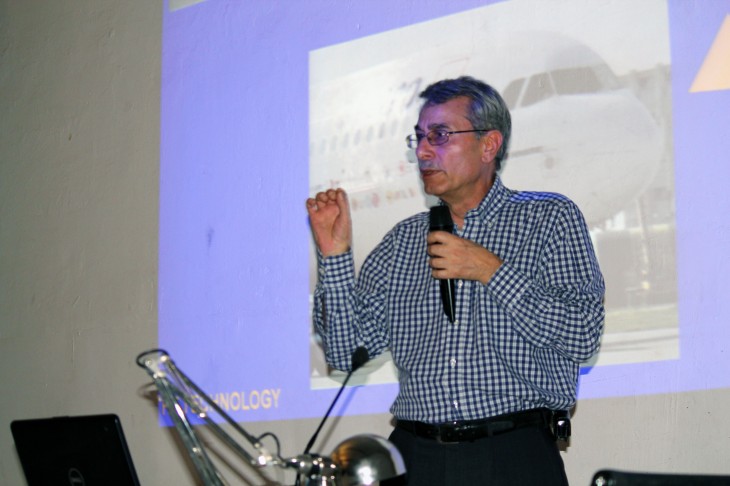Tonight we had the pleasure of taking part in the Fall Lecture Series 2013 George Jeronimidis Lecture on Biomimetics and Bioinspiration.
We were invited to think about architecture in relation to biology, for example: plants share many of the same characteristics as buildings, they are fixed in their context, they must accept what nature and the environment throw at them, and they must adapt to survive. How can we learn something from biology, and apply this to the field of architecture?
The first point of the Lecture lead us to understand exactly what Biomimetics is. Prof. Jeronimidis noted that there are ibfact many ideas as to what Biomimetics is, but the one he relates most to is: “the abstraction of good design from nature” (J.F. Vincent).
Biomimesis should aim not to replace biology, but to understand the mechanisms that biology has developed overtime, and understand what we can then use these mechanisms for. Mimesis, not understood as copying, but as abstraction.
And there are many ways of referring to such a process, for example bio-inspiration, or the German term Bionik (from biology and technic).
There are of course diverse forms of applying biomimetics.
Form/shape biomimetics, taking its inspiration directly from the beauty of the form. Things that are beautiful, that also have a function, but inwhich we show no interest, inspire us. For example the columns in the Stuttgart Airport inpired by the form of trees, the connection between the tree and the structure is only the form, not the function.
Then there is functional biomimetics, a more interesting approach for Prof. Jeronimidis, that implies capturing the function of a living organism and translating it into innovative technology.
For one to approach biomimetics, one must understand biology. The combination of DESIGN DRIVERS OF “NATURAL” DESIGN (the changing physical and chemical environment, and the survival instinct) and NATURAL PROCESSES (adaption, evolution, natural selection, genetic variability, genotypes and phenotypes) make for SMART ADAPTIVE BIOLOGICAL SYSTEMS.
But how do we do biomimetics? What is the plan of action for these technology transfer strategies?
The process starts with biology (biomechanisms, functional morphology and anatomy), without which we inevitably miss the basic information, allowing us to understand the principles, that will then be abstracted and technologically implemented. This process is of course a multidisciplinary process that starts with biology, to then shift to another field of expertise, such as engineering or architecture.
This process can lead to diverse applications from building systems inspired by termite mounds, to material systems inspired by plants (VELCRO, inspired by plant seeds), or also functional surfaces inspired by plants (Self cleaning surfaces inspired by the lotus leaf) or animals (drag reduction surfaces inspired by shark skin), as well as hierarchical structures (noise suppression inspired by owl feathers, then applied to wind turbines by Stefan Oerlemans).
So where is biomimetics relevant today? There are many application sectors for the diverse functional biological levels (molecular, cell/tissue, organ, organism), and of our interest in today’s lecture the application of cell/tissue and organ biological funtions to architecture, and that of the organism to the city. All of these can help us generate bioinspired tools to help shape our future applying biology’s successful design (evolution, natural selection, time, random mutations… + materials, structures, sensors, integration + efficient use of energy) to our field of interest.
So to sum it up, the lessons that we can learn from nature are:
_Inspiration, not imitation
_Highly integrated design – multi disciplines
_Simple materials – fibres – complex structures
_Adaptive, multi functional smart solutions
_Simple physics – smart implementation.

